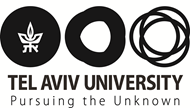Special Student Particle Physics Seminar
Amir Gruber & Aviv Ben Porat
Speaker: Amir Gruber
Title: Towards mono-energetic virtual neutrino beam cross-section measurements: A feasibility study of neutrino-Ar interaction analysis with DUNE-PRISM
Abstract: Neutrino-nucleus cross-section measurements are vital for future neutrino oscillation analyses. However, our models to describe them require further refinement, and a deeper understanding of the underlying physics is essential in order for future neutrino oscillation experiments to realize their ambitious physics goals. Using the DUNE-PRISM concept - a movable near detector that samples multiple off-axis positions - neutrino interaction measurements can be used to construct narrow virtual fluxes (less than 100 MeV wide). These fluxes can be used to extract charged-current neutrino-nucleus cross section as functions of outgoing lepton kinematics within specific neutrino energy ranges. Based on a dedicated simulation with realistic event statistics and flux-related systematic uncertainties, we demonstrate that DUNE-PRISM data can be used to measure muon neutrino charged-current integrated and differential cross sections over narrow fluxes. This approach enables the resolution of key features typically accessible only in electron scattering measurements.
Speaker: Aviv Ben Porat
Title: Study of the Scintillation Induced by n-Ar Interactions for Neutrino Oscillation Measurements
Abstract: Neutrino oscillation experiments rely on precise energy reconstruction to study neutrino properties and probe physics beyond the Standard Model. A critical but challenging component of this reconstruction is the detection of neutrons, which are invisible in Liquid Argon Time Projection Chambers (LArTPCs) yet participate in a significant fraction of neutrino interactions. This talk presents a detailed investigation into neutron-induced scintillation in liquid argon as a pathway to enhance neutron detection.
We combine theoretical modeling and Geant4 simulations to study how neutrons interact with argon and generate detectable scintillation light. Comparisons with experimental data guide our simulation validation and modeling choices. The results support ongoing efforts to improve neutron tagging in LArTPCs and motivate a dedicated experimental setup at the TAU Lab.
Seminar Organizer: Dr. Michael Geller


